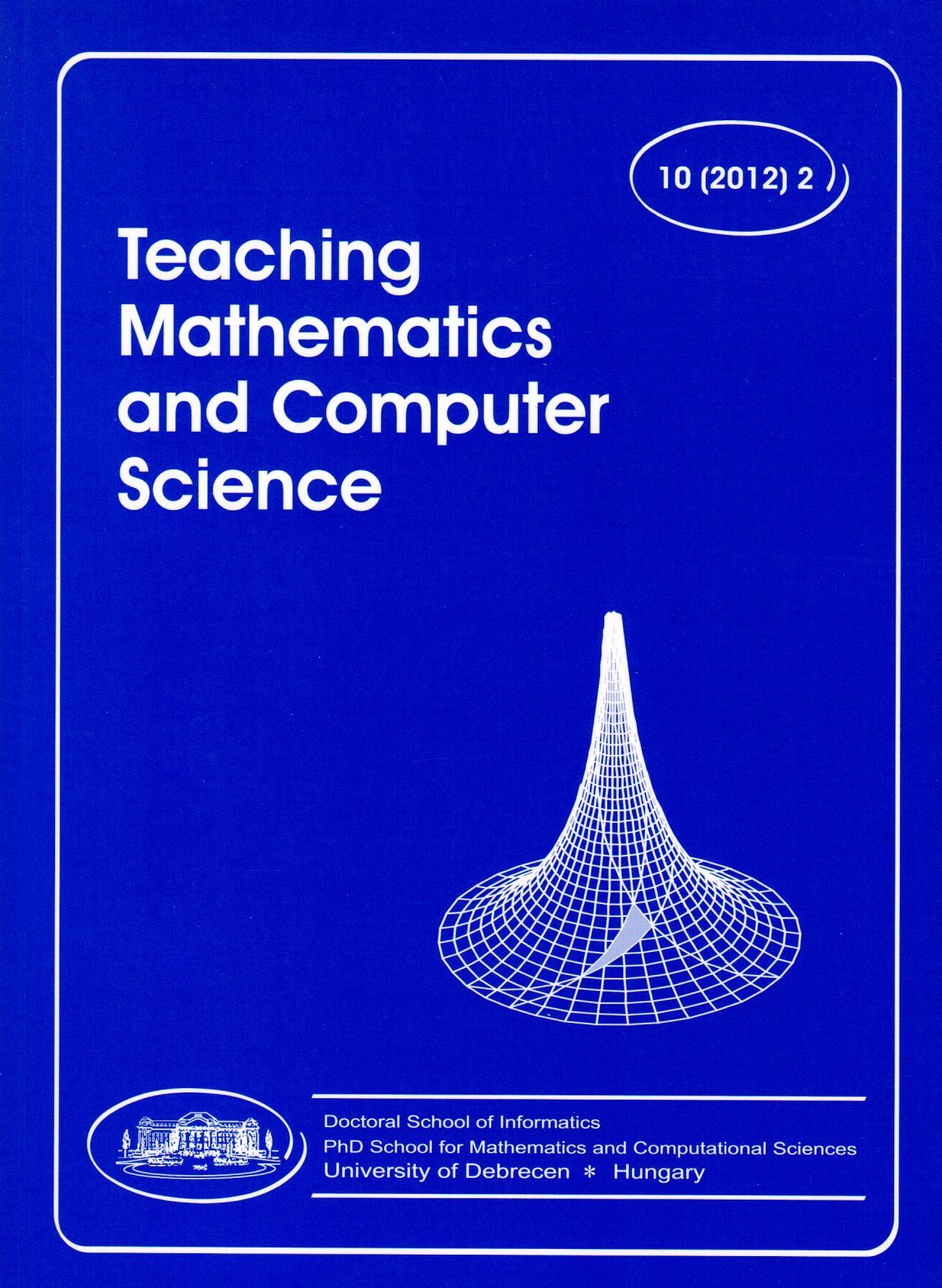Articles
Nice tiling, nice geometry!?!
Published:
2012-12-01
Author
View
Keywords
tiling barycentric subdivision symmetry group D-symbol computer graphics algorithmic classification teaching mathematics through activities
License
Copyright (c) 2012 Emil Molnár

This work is licensed under a Creative Commons Attribution 4.0 International License.
How To Cite
Selected Style:
APA
Molnár, E. (2012). Nice tiling, nice geometry!?!. Teaching Mathematics and Computer Science, 10(2), 269-280. https://doi.org/10.5485/TMCS.2012.0305
Abstract
The squared papers in our booklets, or the squared (maybe black and white) pavements in the streets arise an amusing problem: How to deform the side segments of the square pattern, so that the side lines further remain equal (congruent) to each other? More precisely, we require that each congruent transformation of the new pattern, mapping any deformed side segment onto another one, leaves the whole (infinitely extended) pattern invariant (unchanged).
It turns out that there are exactly 14 types of such edge-transitive (or so-called isotoxal) quadrangle tilings, sometimes with two different forms (e.g. black and white) of quadrangles (see Figure 2). Such a collection of tiling can be very nice, perhaps also useful for decorative pavements in streets, in flats, etc.
I shall sketch the solution of the problem that leads to fine (and important) mathematical concepts (as barycentric triangulation of a polygonal tiling, adjacency operations, adjacency matrix, symmetry group of a tiling, D-symbol, etc). All these can be discussed in an enjoyable way, e.g. in a special mathematical circle of a secondary school, or in more elementary form as visually attractive figures in a primary school as well.
My colleague, István Prok [11] developed an attractive computer program on the Euclidean plane crystallographic groups with a nice interactive play (for free download), see our Figures 3-5.
A complete classification of such Euclidean plane tilings (not only with quadrangles) can be interesting for university students as well, hopefully also for the Reader (Audience). This is why I shall give some references, where you find also other ones.
Further problems indicate the efficiency of this theory now. All these demonstrate the usual procedure of mathematics and the (teaching) methodology as well: We start with a concrete problem, then extend it further, step-by-step by creating new manipulations, concepts and methods. So we get a theory at certain abstraction level. Then newer problems arise, etc.
This paper is an extended version of the presentation and the conference paper [7]. The author thanks the Organizers, especially their head Professor Margita Pavlekovic for the invitation, support and for the kind atmosphere of the conference.
It turns out that there are exactly 14 types of such edge-transitive (or so-called isotoxal) quadrangle tilings, sometimes with two different forms (e.g. black and white) of quadrangles (see Figure 2). Such a collection of tiling can be very nice, perhaps also useful for decorative pavements in streets, in flats, etc.
I shall sketch the solution of the problem that leads to fine (and important) mathematical concepts (as barycentric triangulation of a polygonal tiling, adjacency operations, adjacency matrix, symmetry group of a tiling, D-symbol, etc). All these can be discussed in an enjoyable way, e.g. in a special mathematical circle of a secondary school, or in more elementary form as visually attractive figures in a primary school as well.
My colleague, István Prok [11] developed an attractive computer program on the Euclidean plane crystallographic groups with a nice interactive play (for free download), see our Figures 3-5.
A complete classification of such Euclidean plane tilings (not only with quadrangles) can be interesting for university students as well, hopefully also for the Reader (Audience). This is why I shall give some references, where you find also other ones.
Further problems indicate the efficiency of this theory now. All these demonstrate the usual procedure of mathematics and the (teaching) methodology as well: We start with a concrete problem, then extend it further, step-by-step by creating new manipulations, concepts and methods. So we get a theory at certain abstraction level. Then newer problems arise, etc.
This paper is an extended version of the presentation and the conference paper [7]. The author thanks the Organizers, especially their head Professor Margita Pavlekovic for the invitation, support and for the kind atmosphere of the conference.

 https://doi.org/10.5485/TMCS.2012.0305
https://doi.org/10.5485/TMCS.2012.0305






